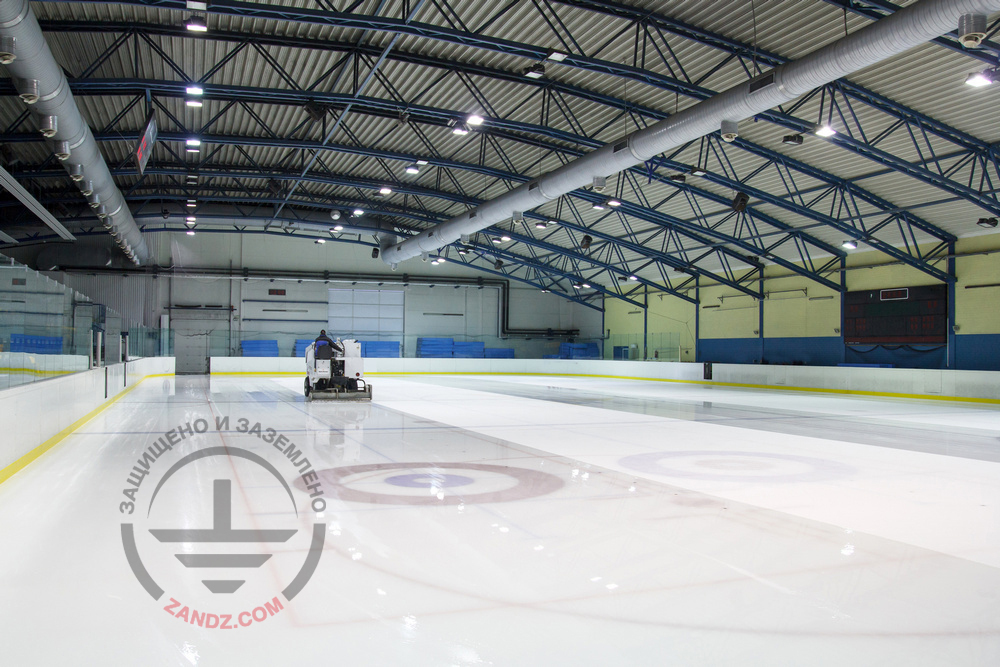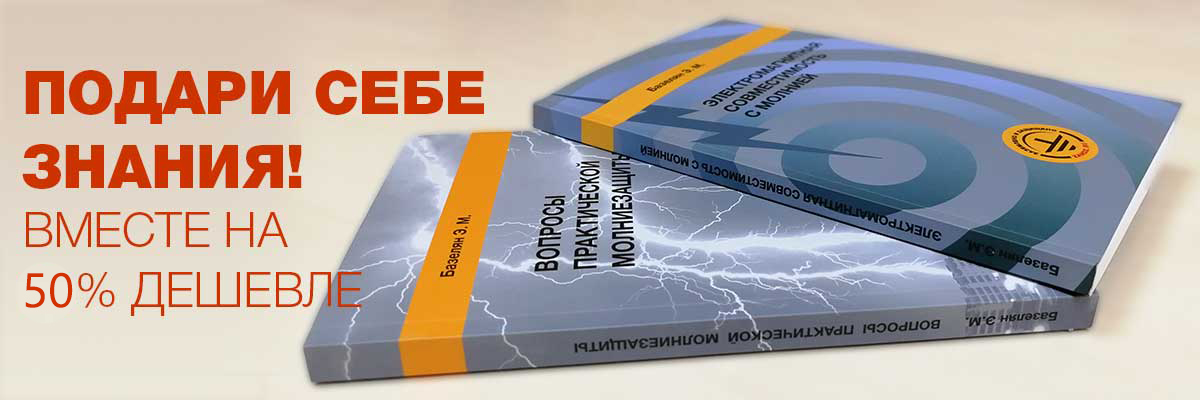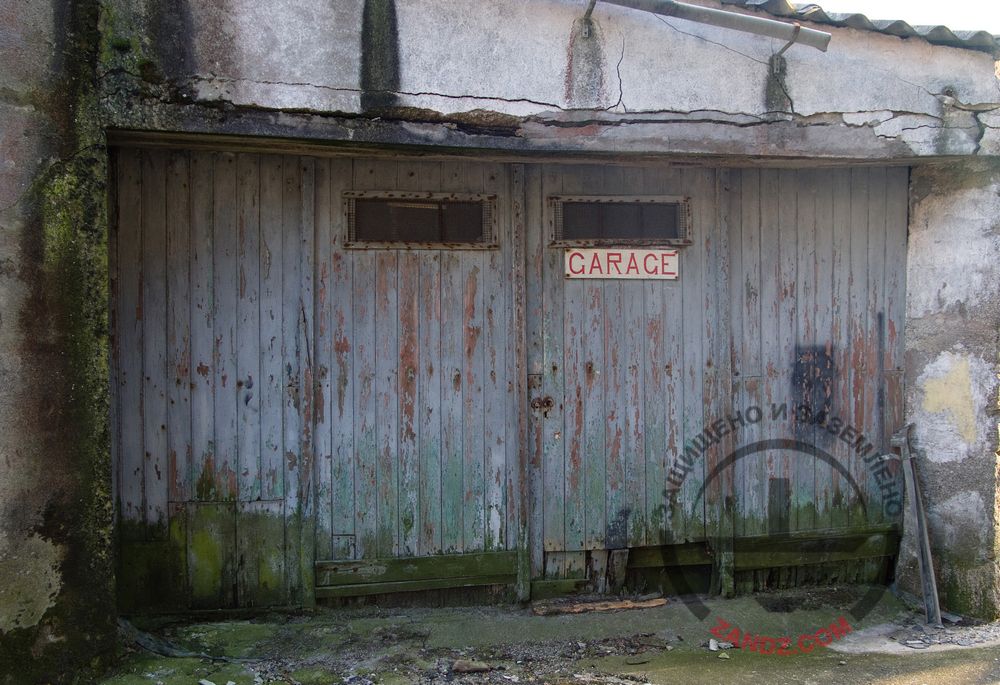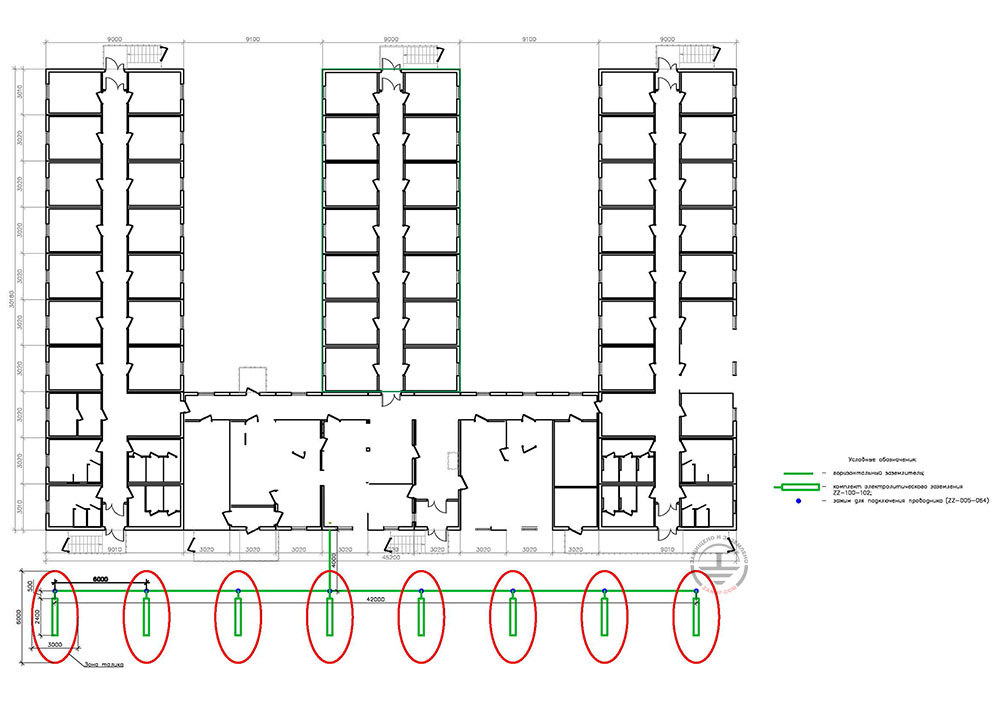Pre-fabricated modular buildings have become a great solution for accommodation of rotational workers. They provide secure shelter and good living conditions even in the Extreme North. Despite the simplified structure, modular buildings also require a reliable grounding just like other structures.
Electrolytic grounding is most often used in permafrost soils to ground the modular camp. To obtain the grounding resistance at least 10 Ohm using traditional methods, you need vast fields of horizontal grounding devices. Moreover, the ejecting effect due to constant freezing and thawing of the upper soil layer is manifested. As a result, horizontal grounding devices become located above the ground level, therefore, you need to bury them again all the time.
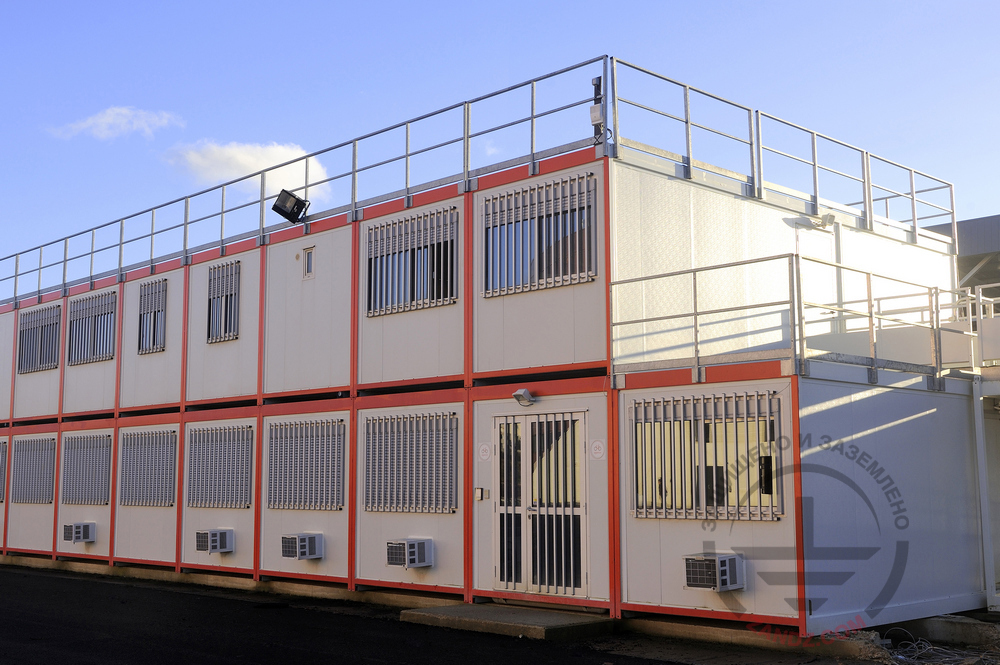
The electrolytic grounding allows removing the ejecting effect due to the fact that the grounding devices are in the talik zone formed as a result of distribution of electrolyte in the ground. The fact that the electrical resistivity of thawed regions is significantly reduced is just as important. This allows arranging grounding devices of small size, which will meet the strict requirements of the grounding resistance.
We are going to consider the case of grounding of a modular camp in permafrost.
Task
To calculate grounding of a modular camp in the permafrost area.
Solution
Solutions for grounding a modular camp were made in accordance with the 7th edition of the Electrical Installation Code.
Description of the grounding system of a modular camp
- To provide the rated resistance of the grounding device,electrolytic grounding ZANDZ ZZ-100-102 is proposed.
- Installation of 5 sets of electrolytic grounding ZANDZ ZZ-100-102, which are combined with a horizontal grounding device made of a corrosion-resistant steel copper-plated strip 4 x 30 mm (GL-11075), is provided as a circuit around the entire building.
- All sets were placed at a distance of 6 meters with a parallel arrangement to achieve the acceptable utilization rate and an optimal volume of electrolyte distribution in the soil.
- The grounding devices are connected using clamps ZZ-005-064.
Условные обозначения - Key
Figure 1. Arrangement of a modular camp in the permafrost area
Calculation of a grounding device for a modular camp
The estimated soil resistivity is taken to be 1,880 Ohm ∙ m.
The calculation is made using formulas provided in the Grounding Calculation page.
The calculation formulas with the completed data are shown below.
The calculation takes into account the strip located along the building contour not shown in the figure.

The estimated resistance of the grounding device is 9.87 Ohm which is less than the required resistance 10 Ohm according to the EIC 1.7.103.
Components for arranging the grounding of a modular camp in the permafrost area
| № | Part number | Name | Quantity, pcs. |
| Grounding arrangement | |||
| 1. | ZZ-100-102 | ZANDZ Electrolytic Grounding Set (horizontal; 3 meters long) | 5 |
| 2. | GL-11075-50 | GALMAR Copper-clad strip (30*4 mm / S 120 mm²; 50-meter strip bundle) | 5 |
| 3. | GL-11075-20 | GALMAR Copper-plated strip (30*4 mm/ S 120 mm²; 20-meter strip bundle) | 1 |
| 4. | GL-11075-10 | GALMAR Copper-clad strip (30x4 mm/S 120 mm²; 10-meter strip bundle) | 1 |
| 5. | ZZ-005-064 | ZANDZ Conductor connection terminal (up to 40 mm) | 20 |
| 6. | ZZ-007-030 | ZANDZ Waterproofing tape | 7 |
Do you have any questions regarding the grounding of the modular camp in the permafrost area? Please, contact the ZANDZ Technical Center!
Related Articles:


